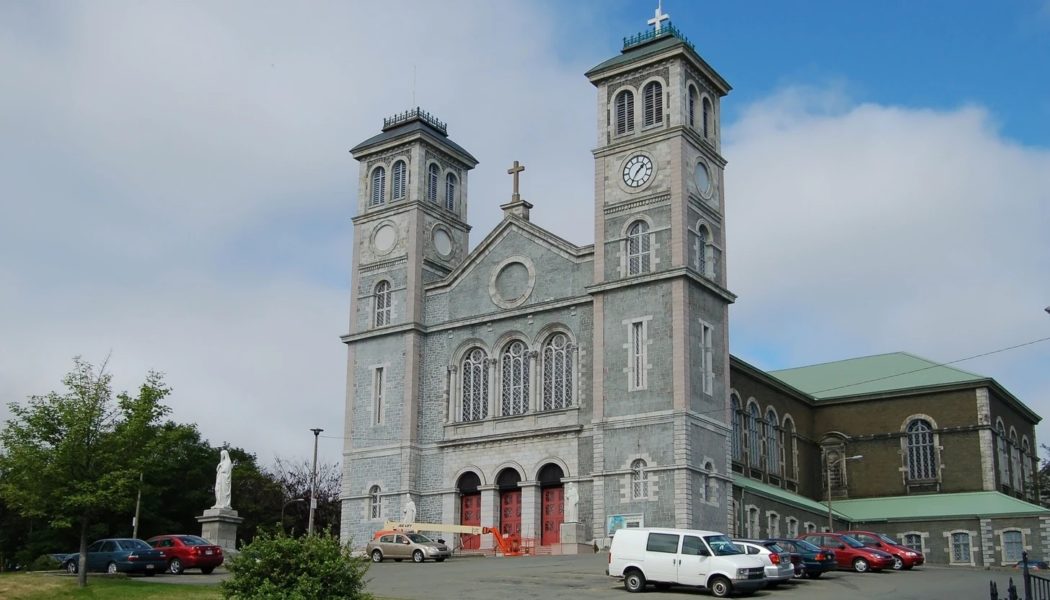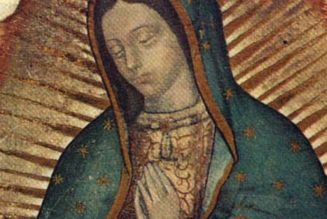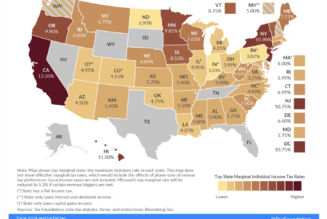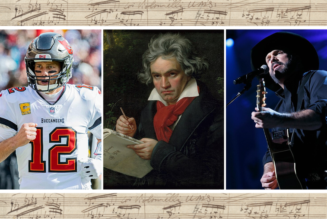Happy Friday friends,
There is a very lot of news to get through this week, so let’s just get on with it.
Some good news this week out of Canada.
A group of business leaders in their small seaside community of Portugal Cove-St. Philips wanted to purchase and redevelop Holy Rosary church as a community space, with a focus on — God spare us — “health, wellness, and mindfulness.”
Well, we heard from friends at Holy Rosary this week, who told us they successfully bid to keep their church in Catholic hands and open as a sacred space.
And it looks like the archdiocesan cathedral has been saved, too. Also this week, another group of Catholics in St. John’s won the bidding for the historic cathedral of St. John the Baptist, saving it from property developers.
It’s not clear yet how the saved buildings’ new ownership will be worked into the pastoral and practical life of the archdiocese, or if the buildings will simply be donated back to the Church. North America has had a bit of a tortured history with privately owned parish churches in the past, and Rome might be a little leery of the return of lay trusteeism.
But for the moment, good news is good news. Mazel tov to our friends at Holy Rosary.
—
Have you ever wondered what sort of person gets put in charge of restoring the art of a Catholic landmark like the Duomo of Florence?
But, big restoration projects to one side, being an artist means taking risks too. Mellini’s studio just spent the last three years developing an image for a 600 square foot mosaic that – as of yet – has no customer, and no place to be installed. We talked to him about the project, and he told us about what it takes to work in the space of sacred art.
You have to be motivated by faith, not money, he told us. Read all about it here.
—
—
Our Ukrainian correspondent, Anatolii Babayinski filed two reports this week on how the Russian invasion is completely reinventing the ecumenical landscape.
The second, published Wednesday, looks at the global situation, which is seeing some real change.
Patriarch Kirill and the Russian Orthodox Church have a long habit of no-showing ecumenical talks. That, as Anatolii reports, has as much to do with intraOrthodox jockeying for position with Constantinople as it does with Catholic-Orthodox relations. Moscow refuses to participate, and the other Slavic Orthodox Churches follow Moscow’s lead, leaving a whole section of the Orthodox world unrepresented.
“Sometimes I think we Catholics are closer to some of the Orthodox than the Orthodox are to each other,” the Ukrainian Greek Catholic Church’s representative to the Joint International Commission for Theological Dialogue Between the Catholic Church and the Eastern Orthodox Church told us.
“The Greek Orthodox world has condemned the ideology of the ‘Russian world.’ So there is a lot of hope. If everything depended on Patriarch Bartholomew and Pope Francis, they could reach the restoration of the communion. Perhaps even before 2025… Everyone favors continuing the dialogue: Greeks, Albanians, Romanians, but the problem is with the Slavic world.”
But things could be about to change as a result of the war in Ukraine.
—
Telling the stories of victims of clerical abuse is important. It’s something we take very seriously. We also take very seriously our work on ecclesial accountability, looking at how allegations are handled, and what process is followed — and how well — when action needs to be taken.
One of the key Church reforms to come out of the McCarrick scandal was a new understanding of the category of “vulnerable adults” in the Church, and attempts to protect them in canon law. In the civil sphere, several states already have laws which criminalize relationships between pastors, priests, and religious ministers and members of their flock, but New York isn’t one of them — Bateman is working to change that.
You can read her story, and about the work she is doing, here.
—
The head of the Vatican’s financial watchdog gave an interview this week to accompany the release of the agency’s annual report, and he took a lap for the “years of great work.” It’s not an indefensibly positive position for him to take, but I’d say it’s open to interpretation.
Carmelo Barbagallo has been president of the Financial Supervisory and Information Authority since 2019, when his predecessor resigned in what we could call “confused circumstances,” prior to being charged last summer with abuse of office.
In his canned interview with Vatican media, he made a lot of hay out of last year’s assessment report from Moneyval, which he called “broadly positive.” I suppose it was. But it was also pointedly critical of the under-resourcing and insufficient specialization of Vatican prosecutors and investigators in financial crimes.
And it was especially critical of the failure in the Vatican to take internal corruption seriously, focusing instead on the risk of money laundering and so on from external actors. That tendency to be blind to internal risks, and even incredulous at the idea of doing something about them, was a clear problem in the ASIF before Barbagallo arrived — as we have heard during the current Vatican trial.
How much progress has been made since then can be measured, in part, by those record high case referrals by ASIF to prosecutors. But unless they lead to actual prosecutions and convictions, few people, including Moneyval, will be impressed for long.
—
Pope Francis and the law of power
Earlier this week, we broke the news that Pope Francis had appointed by decree a new Lieutenant of the Grand Master for the Sovereign Military Order of Malta, following the unexpected death of the previous interim leader of the thousand year old order.
It was an unusual step for the pope to take, and the latest twist in what’s become a canonical and diplomatic saga for the ages, as the knights work towards a revised constitution and the election of a new Grand Master — which they haven’t had since 2020.
Since then, as the dust has settled a little, I’ve had a lot of calls from knights who have expressed deep upset at the move, and a lot of concern about what might happen next. One very senior knight pointed out to me that Francis decided to appoint a new Lieutenant without informing, let alone consulting, the order’s leadership — or even giving notice to Fra’ Ruy, the 82 year-old Grand Commander who had assumed emergency charge.
There are real questions about the internal reforming debate within the order, and I talk a lot to knights on both sides. I’m not a knight, and I don’t have a dog in that fight, but I am struck by the sincerity of both sides and the sadness of the impasse the order seems to be at within itself.
That said, as an external spectator, I am genuinely bewildered by the Vatican’s actions in all of this — pushing a constitutional reform which seems to me to be mostly about governance, without much attention being paid, at least on paper, to the spiritual renewal which was supposedly the whole reason for the pope’s interest in the first place.
I’ve been banging on, for years, about the importance of the order’s sovereignty in international law and the risks posed by the direct interventions of the Vatican — both to the knights’ work, and to the international recognition of the Holy See’s own sovereign status.
There is, and I say this just as a point of legal fact, no mechanism anywhere in the order’s constitution, or its agreements with the Holy See, which recognizes the pope’s power to appoint a new leader by papal fiat. Sure, popes have intervened in the order’s history before, but always in consultation with the leadership and in line with the law.
Is the Order of Malta a Catholic religious order? Yes, absolutely. Is it also a sovereign international entity just like the Holy See? In theory, yes, but that’s getting harder and harder to argue.
Squaring the pope’s religious authority over the order with respect for its sovereign law isn’t actually that hard in practice — as one knight put it to me, had the pope just communicated his desire for a new leader, his reasons, and the candidate he wanted, the order’s leadership would undoubtedly have deferred to his wishes. Having the power to do a thing doesn’t mean it doesn’t matter how it is done.
However paternally motivated, Francis chose to do a very significant thing with the order this week, and I question the advice he was given leading him to do so. And his key legal advisor on the Order of Malta seems to be Fr. (soon to be cardinal) Gianfranco Ghirlanda — a towering figure in canon law circles, and an accomplished academic and jurist.
But, as Ghirlanda has emerged in recent months as the canonical intellectual force behind many of Pope Francis’ legal reforms, he has become the face of a frankly radical new way of understanding and exercising power in the Church. This may prove to be the single biggest legacy of the Francis pontificate, even if it hasn’t been widely noticed yet — let alone fully understood.
The most recent change by Pope Francis to canon law came this week in the form of an innocuous-looking alteration to the process for setting up public associations of the faithful in dioceses.
This might seem like an incredibly in-the-weeds piece of canonical trivia. It is anything but: it is a further shift in the Church’s balance of governing power and pastoral discernment, away from local bishops and towards the Holy See. This is especially significant following the new apostolic constitution Praedicate evangelium, which created the possibility (and the expectation) of lay people leading Vatican departments in the future.
As JD and I wrote Wednesday:
Considered alongside several other recent Vatican moves, Wednesday’s changes point to a shift in the Holy See’s theological understanding of authority itself.
The essential link between the exercise of legislative power and pastoral care of souls in the governance of the Church has served, legally and theologically, as the underpinning of the Church’s ecclesiology of the hierarchy…
While the entire Roman curia is an expression of and sharing in the governing authority of the Roman pontiff, heads of dicasteries enjoy that power in a proper – or official – sense, such that offices occupied by laity would be in a new way empowered to overrule the determinations of bishops, successors of the apostles.
In a nutshell, the sacramental and apostolic authority of the episcopal hierarchy would now seem to be answerable to the merely human and bureaucratic.
The exercise of the power of governance in the Church is articulated by canon law, but it isn’t simply a legal matter. It is intimately tied to our ecclesiology — how the Church understands her own nature — and our sacramental theology.
It’s the teaching of the Church in the Catechism, and in the documents of the Second Vatican Council, that the unity of the pastoral care of souls with the exercise of governing authority in the episcopal hierarchy is real and rooted in sacramental ordination.
Yet, explaining the rationale for lay heads of Vatican departments in the new curial constitution earlier this year, it was Ghirlanda who asserted as if it were fact that “the power of governance in the Church doesn’t come from the sacrament of Holy Orders, but from the canonical mission.”
If that is true, and if it becomes the lived ecclesiology of the Church, it is potentially more revolutionary than any reform I can think of since the First Vatican Council. The effects would be profound and, in many ways, they are already visible, albeit in a scattershot range of issues.
The essential link between the governing power, sacramental leadership, and pastoral authority in the office of the diocesan bishop in the mind and teaching of the Church was a key theme of the Second Vatican Council, which repeatedly emphasized the need for a rediscovery of the autonomy and dignity of the diocesan bishops as successors to the apostles in their own right, after centuries of Roman centralization.
But Wednesday’s canonical change is the most recent in a slate of actions by Rome under Francis which seem to have rolled back the post-conciliar implementation of this conciliar principle. It isn’t something that has been much noted by Church commentators, for many of whom Vatican II is more of a feeling, or state of mind, than an historical event that produced tangible documents.
Whether it is removing the authority of the bishop to discern the charism of a budding religious order or regulate the liturgical life of the diocese, giving lay people charge of the sacramental faculties of clerics, or summarily sacking a diocesan bishop without apparent cause or process, or acting praeter legem to appoint a new leader for the Order of Malta, Francis has presided over a profound revision of the understanding and exercise of power in the Church.
I say this without arguing that each action wasn’t taken to address a particular problem, and without impugning the pope’s motives in any single case, and I am not saying the pope cannot do what he has done in every case.
But each instance is an example of Ghirlanda’s philosophy of governance — there is the pope, he’s the man, and all power flows from and depends upon him.
It envisages all other authority in the Church as essentially vicarious, and that is something Vatican Council II explicitly taught against.
The implications of these actions reach far beyond simple canonical tinkering, and represent the most profound reimagining of the Church’s ecclesiology since the council. You do not have to be either for or against this new vision to appreciate its significance.
See you next week,
Ed. Condon
Editor
The Pillar
Join Our Telegram Group : Salvation & Prosperity










